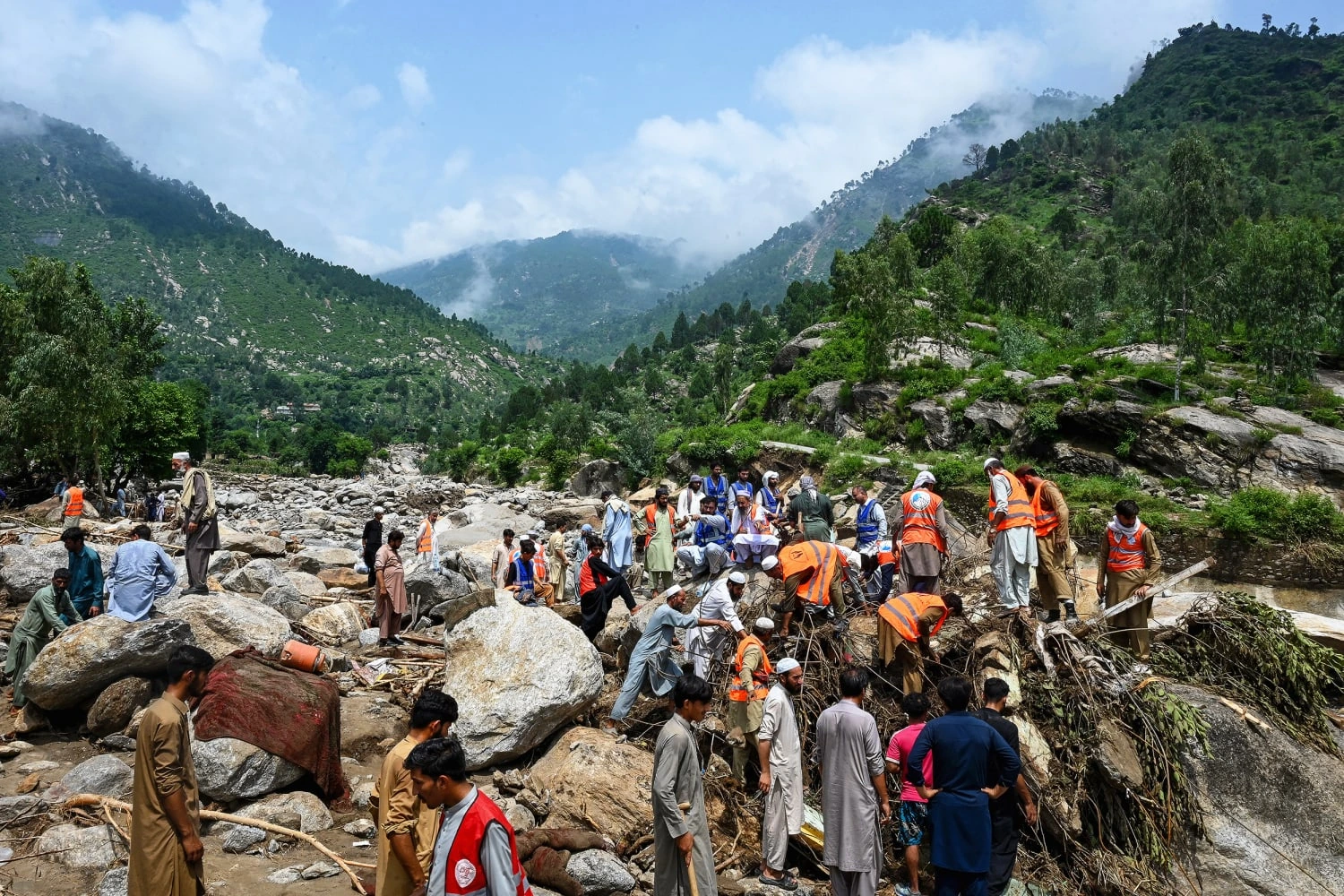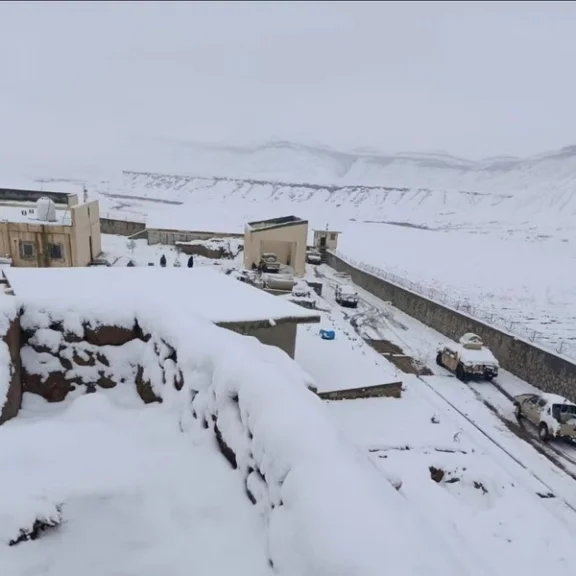“Pakistan is living through one of the most serious climate catastrophes of the world, we are at this point ground zero of the front line of extreme weather events, which we have seen from early this year from an unrelenting cascade of heat waves, forest fires, flash floods, multiple glacier lake outburst events and now the monster monsoon of the decade.”
-Sherry Rehman
What used to be rare is now routine. Flash floods, glacier melts and now, cloudbursts, which appeared as a new monster, are wreaking havoc across parts of Pakistan more frequently and violently. These phenomena are no longer isolated natural occurrences; rather, they are signs of a much more serious problem: climate change. Some of the worst natural disasters in Pakistan’s history have devastated the country in just the last three years. The United Nations called the 2022 floods one of the worst climate disasters in modern history, with a third of the country submerged under water. 33 million people were impacted, and more than 1,700 people lost their lives. The infrastructure and agriculture industries were devastated, and damages totaled more than $30 billion. Additionally, cloudbursts, a sudden, violent downpour that dumps more than 100 mm of rain per hour, have become a new and terrifying norm just as the nation was starting to recover. Such cloudbursts struck areas of Khyber Pakhtunkhwa (KPK) in August 2025, including Buner, Swat, and Bajaur, resulting in flash floods that killed over 300 people in a few hours. Whole villages were washed away. Homes, bridges, and roads were all destroyed. The nation was in a state of emergency, and once more, the world sent condolences but little else.
The crucial query is: why should Pakistan bear the consequences of a crisis that it did not cause?
Less than 1% of the world’s greenhouse gas emissions come from Pakistan. It is far less than the industrial powers that have released the majority of the carbon that is causing global warming, according to Oxfam. It is still one of the ten nations most at risk from climate change, though. Today’s world is divided between the Global North and the Global South, according to John Hackett’s book The Divide. The North exports the costs of industrialization to the rest of the world while enjoying its benefits, thanks to its consumption-driven economies. Unfortunately, Pakistan is the country that suffers the most from this global imbalance. Unsettling as it may be, the answer is found in domestic unpreparedness and worldwide inaction. On the one hand, it is evident that high-emission nations have not fulfilled their commitments to climate finance. However, Pakistan’s planning, infrastructure, and readiness are still woefully inadequate to handle the magnitude of environmental catastrophes that are now becoming routine.
This goes beyond seasonal variations and the weather. This concerns national stability, economic survival, and human security. Nevertheless, climate change is still viewed as a secondary issue in both our national and international policies. According to the Critical Security Studies (CSS) theory, developed by scholars and academics like Ken Booth and John Welsh, security should encompass more than just border security and military threats. Protection from poverty, illness, displacement, and environmental disasters, are all part of true security. Rising waters pose the same threat to human life as bombs or bullets do. This appeared as more concerning than any other traditional threat existing around.Over 8 million people were displaced by the floods in 2022. Schools were destroyed. Hospitals were overcrowded. Inflation skyrocketed and crops were destroyed. Floods and cloudbursts are predicted to cost the economy more than $1.4 billion by 2025, with a large portion of that amount affecting rural livelihoods and agriculture. Families are becoming more impoverished. Communities are disintegrating. Furthermore, Pakistan’s future is literally drowning, with over 60% of its population under 30.
Cloudbursts: The New Norm and Voices from the Front Lines
Although cloudbursts might seem like an uncommon occurrence, they are rapidly contributing to a new climatic trend in South Asia. These phenomena occur when hot air, frequently over hilly or mountainous terrain, abruptly releases a concentrated downpour of moisture that has been held in large quantities. Particularly at risk are regions in Pakistan such as northern KPK, Gilgit-Baltistan, and portions of AJK. Experts caution that rapid glacier melt, changing monsoon patterns, and warming temperatures, all of which are exacerbated by global climate change, are the direct causes of cloudbursts. Even worse, the destruction is exacerbated by Pakistan’s deforestation, inadequate land-use planning, and absence of early warning systems. (Not whether these occurrences will continue, but rather our readiness for the next one, is the question at hand.) In his speech to the UN General Assembly in 2022, Foreign Minister Bilawal Bhutto Zardari issued a warning: “What happened in Pakistan will not stay in Pakistan.” He called on the world community to acknowledge that the climate crisis transcends national boundaries. Pakistan is the warning sign, not the exception, he made clear in his message. However, not much has changed since then. Climate finance commitments are still mostly unfulfilled. The floods of 2022 caused a slow and poorly funded recovery. Additionally, there is an urgent need to change course quickly due to the increasing frequency of cloudbursts.
The strategies to control this are challenging but necessary. First and foremost, Pakistan needs to make investments in climate-resilient infrastructure, especially in areas that are vulnerable near rivers, mountains, and coasts. Climate-proof roads and buildings, early warning systems, drainage systems, and embankments must all be made standard, not optional. Second, in order to give communities affected by disasters immediate assistance, the government needs to improve its cooperation with regional and global NGOs. Humanitarian assistance must be prompt, well-coordinated, and open.Third, political leadership on the international scene is desperately needed. Pakistan must keep advocating for climate justice by pointing the finger at the industrial nations that are to blame for global warming and demanding just compensation in accordance with the “Loss and Damage” framework that was established at COP27. The fourth and most crucial step is to integrate climate security into Pakistan’s national security strategy. We must prepare for environmental threats with the same urgency and gravity as we do for geopolitical ones.
The map of danger has changed as a result of the climate crisis. Traditional concepts of security are no longer sufficient. A national emergency occurs when villages are destroyed in a matter of hours, when crop losses cause food prices to double, and when people are forced to leave their homes due to water shortages rather than conflict. Pakistan is at the forefront of a worldwide conflict that it did not initiate. It is fighting with a greater burden, a weaker voice, and fewer resources. However, it must retaliate, with more savvy policies, more robust infrastructure, and more assertive diplomacy. Since the new normal has already arrived, it will become the new forever if we do not take action now.
The views expressed in this article are the author’s own. They do not necessarily reflect the editorial policy of the South Asia Times.







